Total Harmonic Distortion (THD): Harmonic distortion occurs when multiples
of the fundamental signal are produced due to non-linear driver behavior. A
subwoofer with low THD will sound clean and distinct, especially at the
deepest frequencies. THD was evaluated with sine waves (about 5 seconds
duration), and was limited to approximately 10% unless otherwise noted.
Clean output from the Servo-15 was much higher than average across the
entire pass band. Note the servo circuit limited THD to less than 10% at
certain frequencies.
| Frequency (Hz) |
SPL (dB) |
THD (%) |
Comments |
| 20 |
95.5 |
10.1 |
|
| 22 |
98.4 |
10.3 |
|
| 25 |
102.0 |
8.9 |
servo limited THD to <10% |
| 32 |
106.7 |
8.7 |
servo limited THD to <10% |
| 40 |
110.1 |
7.9 |
servo limited THD to <10% |
| 50 |
110.5 |
7.6 |
servo limited THD to <10% |
| 63 |
110.1 |
10.3 |
|
| 80 |
108.0 |
10.0 |
|
Bandwidth Linearity: Bandwidth linearity is calculated by dividing the
average distortion-limited SPL by the maximum distortion-limited SPL, and
expressing the result as a percentage. A score of 100% means the subwoofer
exhibits perfect clean output linearity across a given bandwidth.
The Servo-15 performed very well, with high output levels and exceptionally
good bandwidth linearity.
| Bandwidth (Hz) |
Average SPL (dB) |
Bandwidth Linearity |
| 20-80 |
105.2 |
95% |
| 22-80 |
106.5 |
96% |
| 25-80 |
107.9 |
98% |
Phase Response and Group Delay: A sufficiently large and abrupt phase shift
may cause the perception of time smearing at the affected frequencies. Group
delay is used to quantify this phenomenon, and is calculated at select
music note frequencies. The approximate audibility thresholds are based on
extrapolations of existing group delay audibility studies.
Group delay from the Servo-15 remained below the approximate audibility
thresholds at each tested frequency.
| Musical Note/Frequency |
Group Delay (ms) |
Approximate Audibility
Threshold (ms) |
| F2 / 87 Hz |
3.9 |
15 |
| G1 / 49 Hz |
3.0 |
25 |
| C1 / 33 Hz |
23.2 |
35 |
| A0 / 27 Hz |
29.6 |
42 |
Impulse Response: A phase switch setting of 00 on the Servo-15
resulted in a non-inverted impulse response. The impulse response (black
line) shows moderate transient overshoot and system ringing for about 60 ms,
which is a normal for this type of subwoofer and shouldn't be audible under
normal listening conditions. The amount of ringing exhibited by a subwoofer
is affected by its roll-off profile. A subwoofer with an abrupt and steep
roll-off will generally ring longer than a subwoofer with a more gradual and
shallow roll-off.
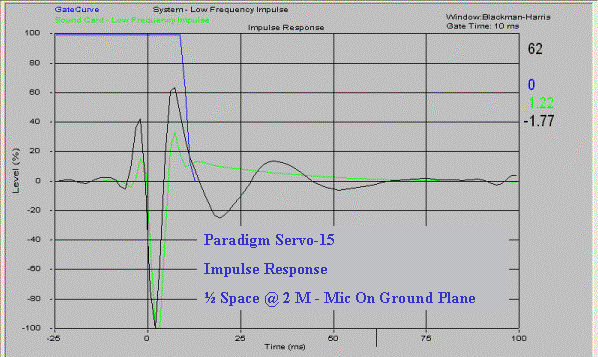
Spectral Decay: This test shows the low level spectral decay products of the
subwoofer in 3 dimensions along a time axis. This test can help reveal
audible cabinet resonances or loose/vibrating parts in the subwoofer.
Spectral decay was evaluated to the –35 dB level, relative to the test
volume.
Minor system resonances were noted across the pass band, but none of them
exceeded –25 dB in amplitude, and they all dropped below the –35 dB test
floor after about 160 ms. These resonances won't be audible under normal
use, and in fact the 160 ms resonance decay time is shorter than most
subwoofers I've tested, indicating a well-braced and rigid enclosure.
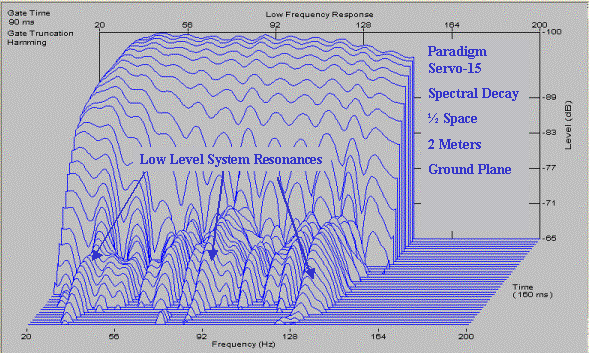
In-Room Frequency Response:
The Servo-15 was placed near the front left corner of my 2,000 ft3 room. For
digital bass management, the main speakers were set to “Small” with a
crossover frequency of 80 Hz. The digital bass management circuit imposes a
2nd order high pass filter on the speakers, and a 4th order low pass filter
on the subwoofer. The low-pass filter switch was set to 150 Hz to prevent
cascading with the low pass filter in the digital bass management circuit.
The in-room frequency response was measured at the primary listening
position (about 11 feet from the subwoofer) with the main speakers and the
subwoofer operating. Setting the subwoofer phase to 00 provided the
best results, with no obvious cancellation at the crossover frequency.
The in-room frequency response showed typical anomalies caused by room
acoustics and the asymmetrical filters in the digital bass management
circuit. Considerable room gain was also observed starting below about 30
Hz. I used my Rane PE-17 parametric equalizer to optimize the frequency
response, taming room mode peaks and lessening the effects of room gain. The
final in-room FR at the listening position was approximately 17 Hz - 100 Hz
± 3
dB.
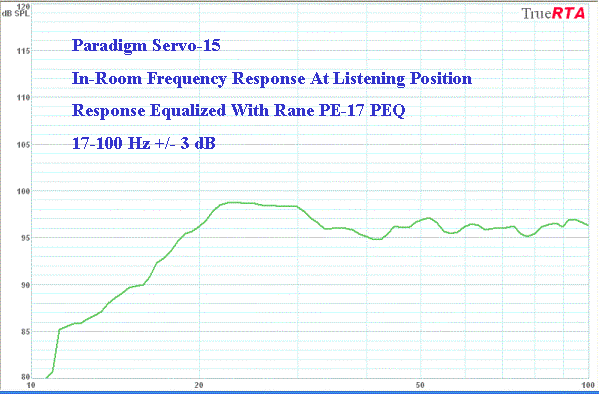
With Movies
I played several action-oriented DVDs, evaluating the Servo-15 for mid-bass
dynamics, audible artifacts (muddiness, cone cry, rattling), deep extension,
and output compression. My overall subjective home theater ratings for the
Servo-15 are provided in the table below, with a rating of 5 being the best
score:
| Evaluation Criteria |
Rating (1-5) |
Summary Comments |
| Mid-Bass Dynamics |
4.50 |
Very strong output in the 35 Hz - 60 Hz region. |
| Audible Artifacts |
5.00 |
Servo circuit prevents any audible artifacts, always
sounds pristine. |
| Deep Extension |
4.00 |
Digs very deep at moderately loud playback volumes.
Servo rolls off deep extension at high playback volumes. |
| Deep-Bass Compression |
3.50 |
Moderate compression noted on deep bass peaks at
high playback volumes. |
Provided below are my listening notes from The Incredibles in Dolby Digital
5.1. To give readers an idea of how loud the Servo-15 can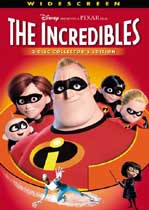 comfortably play
in my mid-size room, I increased the master volume until the subwoofer
started to exhibit noticeable output compression and a loss of deep
extension on the most demanding and deep passages, and then I backed off a
few dB. I monitored the sound pressure level at the listening position with
a B&K meter set to C-weighted fast. The SPL peaks listed are straight meter
readings, with no correction factors added.
comfortably play
in my mid-size room, I increased the master volume until the subwoofer
started to exhibit noticeable output compression and a loss of deep
extension on the most demanding and deep passages, and then I backed off a
few dB. I monitored the sound pressure level at the listening position with
a B&K meter set to C-weighted fast. The SPL peaks listed are straight meter
readings, with no correction factors added.
Also provided below are a few spectral charts from selected movie scenes
that have a lot of bass.
These charts show where in the frequency spectrum the deep bass occurs, with
darker red and pink colors being the loudest. As shown in the spectral
charts, many of these scenes in The Incredibles have strong content at
25 Hz and deeper. Spectral charts provided courtesy of Ilkka Rissanen.
Mr. Incredible Stops Train; 108 dB:
The Servo-15 delivered a nice percussive hit upon the initial train impact,
and I could feel each track lifting and breaking under Mr. Incredible's
feet.

Secret Message Self Destructs; 108 dB:
Here the Servo-15 pressurized the room nicely, convincing the viewer a small
bomb really did go off in an adjacent room.

Syndrome Traps Mr. Incredible With Force Field; 104-107 dB:
Lots of signal content in the 35 Hz region, with sub-harmonics at 17 Hz. The
Servo-15 dug down cleanly to provide an exciting infrasonic undercurrent on
this scene, sending tingles through the room.

Transport Car Lands On Guards; 107 dB:
This scene contains an enormous amount of energy in the 20-30 Hz region. If
I pushed the master volume too high, I noticed some compression and deep
bass roll-off on this scene. Lowering the master volume a few dB restored
the proper level of impact and extension. To its credit, the servo circuit
never allowed any audible signs of distress on this demanding passage.

Rocket Blast Blows Out of Tunnel; 105-108 dB:
Talk about infrasonics - this sequence has strong content right down to 5
Hz! This is another extremely demanding passage where I could induce some
output compression if I pushed the Servo-15 too hard. At about 10 clicks
under Dolby Reference Level, the Servo-15 sounded great on this scene,
cleanly digging to below 20 Hz with authority. As bass heads and fans of
this DVD will attest, the rocket lift-off sounds eerily lifelike with the
right subwoofer. The Servo-15 nailed all the subtle nuances and sound
effects – especially the knocking and rattling sound effect toward the end
of this passage.
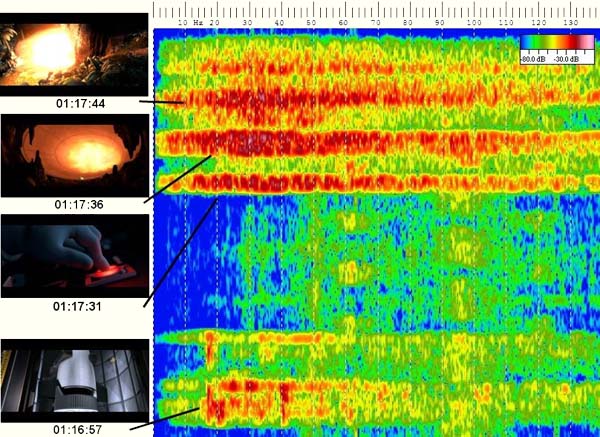
With Music
I evaluated the Servo-15 on several music selections for balance,
definition, pitch, coherence, and deep extension. As expected, the Servo-15
performs admirably with all forms of music, including pipe organ. It always
sounded natural and well balanced, exhibiting excellent detail and pitch on
all musical instruments. The Servo-15 integrated exceptionally well with the
mains, never sounding like a separate subwoofer. At the more moderate
playback volumes typical for music, I never noticed any compression or a
loss of deep extension, even when playing pipe organ music. My overall
subjective music ratings for the Servo-15 are provided in the table below.
| Evaluation Criteria |
Rating (1-5) |
| Balance |
4.50 |
| Definition |
4.75 |
| Pitch |
4.75 |
| Coherence |
4.50 |
| Deep Extension |
4.75 |
Provided below are some listening notes from a few CDs.
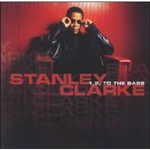 1)
1,2, To The Bass – Stanley Clarke, Sony Music Entertainment, Epic
Records, 2003. Who can argue Stanley Clarke is one of the most influential
bassists and jazz musicians of our time? The Servo-15 sounded rich and
resonant on "Anna (She Loves The Good Life)", easily lifting and separating
each deep note as Clarke deftly travels the bass registers.
1)
1,2, To The Bass – Stanley Clarke, Sony Music Entertainment, Epic
Records, 2003. Who can argue Stanley Clarke is one of the most influential
bassists and jazz musicians of our time? The Servo-15 sounded rich and
resonant on "Anna (She Loves The Good Life)", easily lifting and separating
each deep note as Clarke deftly travels the bass registers.
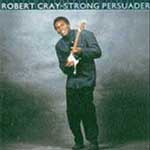 2)
Strong Persuader – Robert Cray, Polygram Records 1986. Strong Persuader
is the album that rocketed Robert Cray to stardom, a well-deserved status he
still enjoys. Bassist Richard Cousins anchors "Right Next Door (Because Of
Me)" with great timing and lively bass lines. The Servo-15 blended perfectly
with the mains, allowing them to preserve timbre of the bass guitar. Kick
drum strikes were always audible and distinct, even if they occurred
simultaneously with bass guitar notes.
2)
Strong Persuader – Robert Cray, Polygram Records 1986. Strong Persuader
is the album that rocketed Robert Cray to stardom, a well-deserved status he
still enjoys. Bassist Richard Cousins anchors "Right Next Door (Because Of
Me)" with great timing and lively bass lines. The Servo-15 blended perfectly
with the mains, allowing them to preserve timbre of the bass guitar. Kick
drum strikes were always audible and distinct, even if they occurred
simultaneously with bass guitar notes.
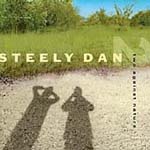 3)
Two Against Nature – Steely Dan, Giant Records, 2000. Walt Becker and
Donald Fagan return after a 20 year hiatus in Two Against Nature. "Gaslighting Abie" opens with a well-recorded bass kick drum, and the Servo-15
sounded tight and percussive, with no slop or overhang. Bassist Tom Barney
shows off with some complex and fast finger work and the big Paradigm easily
kept pace, never blurring the notes and always sounding articulate.
3)
Two Against Nature – Steely Dan, Giant Records, 2000. Walt Becker and
Donald Fagan return after a 20 year hiatus in Two Against Nature. "Gaslighting Abie" opens with a well-recorded bass kick drum, and the Servo-15
sounded tight and percussive, with no slop or overhang. Bassist Tom Barney
shows off with some complex and fast finger work and the big Paradigm easily
kept pace, never blurring the notes and always sounding articulate.
4) Sound Hound Classical Organ CD, Artist Unknown, 2003. I couldn't resist
breaking out the infamous “Sound Hound” Classical Organ CD. The Servo-15 hit
even the deepest (17 Hz) notes with authority, perfectly tracking subtle
changes in air pressure, bringing impressive realism to this difficult
recording. Even at chair massaging playback levels, I heard no audible
doubling, just pristine infrasonic bass.
Conclusions
The Paradigm Sevo-15 is a technical tour de force, with a very rugged and powerful
amplifier, a sophisticated servo-feedback circuit, and a killer 15” woofer.
During both objective testing and subjective reviews, it always remained
extremely well behaved. I threw every torture test in the book at the
Servo-15, and it never faltered, shut-down, or generated even a hint of
audible doubling, cone cry, or cabinet rattle. This is one heavy duty and
bulletproof subwoofer built to withstand anything the owner can dish out.
The Servo-15 always sounded natural and accurate when playing all kinds of
music, and its performance on pipe organ music was particularly impressive.
And, up to fairly loud playback levels, it offers excellent deep extension
and impact on action-oriented DVD movies. The Servo-15 ultimately will scale
back both deep extension and output (to maintain low distortion) if pushed
too hard on bass-heavy DVDs. In my mid-size listening room, the Servo-15
remained compression free at listening levels averaging 5 dB - 8 dB below Dolby
Reference Level. Home theater aficionados who listen at/near Dolby Reference
Level should consider dual Servo-15s to preserve deep extension and dynamics
at the highest playback levels.
Balanced, refined, and sophisticated sums up the Paradigm Servo-15. Few subwoofers
carry such instant name recognition or have garnered such consistent and
universal praise from reviewers and enthusiasts alike. After wringing out
this subwoofer in objective testing and living with it for three months, I
will definitely say that you
can add me to the list of Servo-15 fans.
- Ed Mullen -